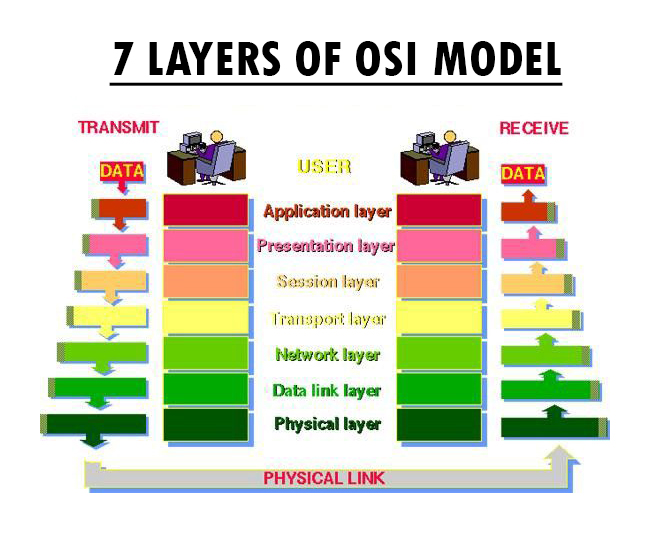OSI stands for Open System Interconnection. OSI model is a set of rules that makes communication between two systems. The data is transferred from one computer system to another by this set of rules that the OSI model defines. OSI model was developed by ISO (International Standard organization).
The OSI model is divided into seven layers. The seven-layer concept was made by the work of Charles Bachman at Honeywell Information system.
Definition of OSI model
OSI model is a set of protocols and rules by which communication between two network devices is made possible. The network device can be either of mobile device, tablet, laptop, PC, workstation or any other network device.

Layers of OSI model
The seven layers of the OSI model are explained below:-
Application layer
In the application layer, the software applications send and receive data over the network. Examples of application software are Office365, Chrome, Firefox, WhatsApp, Microsoft Edge etc. The application layer work on different protocols e.g., File transfer protocol (FTP), Hypertext transfer protocol (HTTP), Simple mail transfer protocol (SMTP), Post office protocol (POL), and Domain name system (DNS)
Presentation layer
The data move from the application layer to the physical layer. The physical layer encrypts the data so that the size of the data becomes small. The data is compressed and encoded in the physical layer. On the receiver end, the presentation layer then decrypts, uncompress and decode the data.
Session layer
In the session layer, the sessions are created. All the data goes through checkpoints. Suppose the data link is disconnected then after reconnection the data is again sent through the session so that the previous session is restored and only remaining data is transferred.
Transport layer
In the transport layer, the data received from the session layer are segmented and then transferred to the network layer. The transport layer must match the connection speed of the sender and receiver. Suppose the computer receiving the data has slow connection speed so the transport layer also slows down the data transfer speed of sender.
Network layer
In the network layer, the segments received from the transport layer are further divided into packets and then transferred to the data link layer. The shortest network path is also calculated in the network layer. The network layer also identifies the IP addresses of the receiver and sender to transfer data.
Data link layer
The data link layer further divides the packets received from the network layer into frames. This layer also stores the MAC addresses of the sender and receiver. The mac addresses are used to identify the sender and receiver devices. The error checking of data and synchronization of data frames is also done in this layer.
Physical layer
The physical layer is responsible for transferring data through physical devices such as wireless devices, cables and network connectors. The data frames received from the data link layer are further divided into 0 and 1 form i.e. in bits form then transferred to the physical layer of the receiver. The receiver device gets data through the physical layer and goes from the data link layer and all the layers up to the application layer.
The first three layers i.e. application layer, presentation layer and session layers are software layers while the last three layers i.e. network layer, data link layer and physical layer are hardware layers.




